Book on painting and scientific invention
Professor Pasterkamp: ‘The artist and the inventor are both creative’
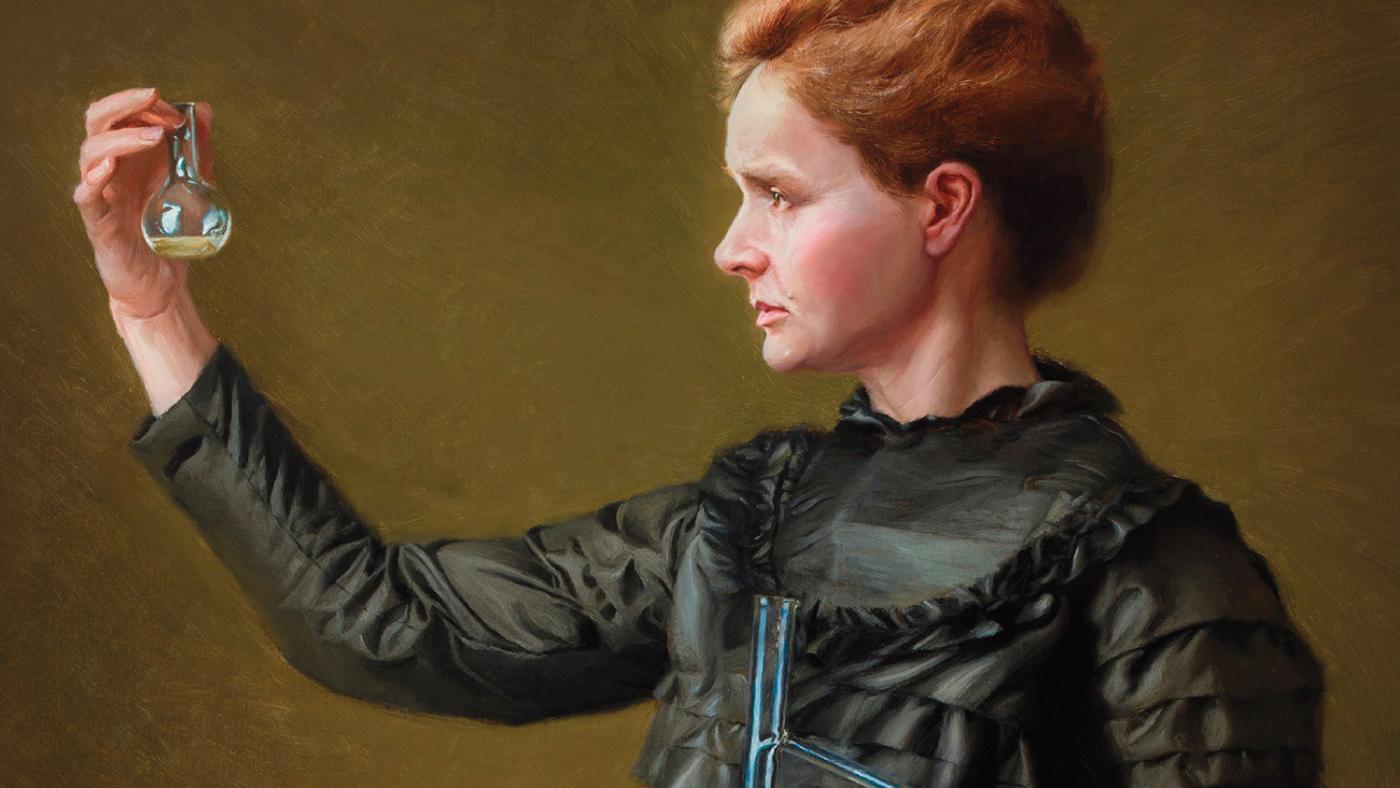
Pasterkamp, Professor of Experimental Cardiology, has been interested in art and history for as long as he can remember. “It started with the stories of Greek mythology in high school, and after that, my interest only grew.”
His interest in the visual arts was sparked by visits to museums during Pasterkamp’s travels for his work. He has been working at the University Medical Center Utrecht (UMCU) for over 20 years. ”When I was passing through and had to wait half a day for my plane back home, I always tried to visit a museum. For example, the Getty Museum in Los Angeles or the National Gallery of Art in Washington.”
Over the years, the professor became increasingly curious about the relationship between art and science. He went in search of specific information about it. “During my search for a book that connects science and art, I found out that what I was looking for did not exist. That was the moment I decided: I’m going to write a book in which my work as a scientist and my interest in art come together.”
He started his search with works he already knew. ”Like Joseph Wright’s painting The Orrery of Derby.”

It shows a philosopher giving a lecture with a reconstructed planetary system in which a lamp is supposed to replace the sun. “I really like Joseph Wright Derby’s paintings, partly because of the diversity of impressions he depicts in the faces. But also the light-dark proportions.”
“Later I reversed my methods and checked the hundred most special inventions in history that you can find on the many rankings on the internet. I started researching whether, and if so, which paintings are related to this. Now and then, Pasterkamp was surprised. “I knew that the art of printing was one of the most important discoveries in history, but that the invention of the knitting machine is also in the top rankings of most important inventions in history was a surprise. The story behind it also appealed to me. When the knitting machine was invented in 1589 by Englishman Willem Lee, there was a lot of resistance from craftsmen. Partly due to the support of Queen Elizabeth I, the inventor was not even granted a patent in England, because she was afraid that the craftsmen would lose their jobs and become rebellious.”
Creative
The fact that science and art are related is not surprising, Pasterkamp says. “Artists and inventors share the ability to be creative.” But there is also another, more logical explanation for the fact that a lot of science has been incorporated into paintings from the past. “Important events, including the presentation of new inventions, were often attended by a painter. Where we now have a photographer who captures something, in the past, this was often done by an artist.” After a year and a half of work and research, Pasterkamp published Painted Science in January. The Dutch translation followed in March. The book is structured in chronological order and takes the reader on a journey through the world of important discoveries and technological innovations that changed the world through two hundred works of art. The oldest example from the book is the fresco of Galen and Hippocrates, the latest example is the painting of Marie Curie by Sokov, which can also be seen on the cover of the book.
In addition to paintings by prominent figures in science, the book also contains works of art that describe and depict explorers, such as the famous Marco Polo, and scientific fraud, such as quackery.
But there is also a chapter dedicated to the oldest universities. Like the University of Bologna, which was founded in 1088 by a group of students. At the time, the university grew into the largest university in Italy with over 90,000 students. A special detail is that this university was at the forefront of gender inclusivity and also allowed women to obtain university degrees.
When asked what the reactions to his book are, Pasterkamp laughs a little. “I was surprised by the attention paid to the book. I have published a lot as a researcher within the university and the UMCU, but this book attracted attention from a much wider audience. Many female readers are also pleasantly surprised with my choice to put Pavel Sokov’s female scientist Marie Curie on the cover.”
Below is a summary of texts about three inventors, and works of art related to them, from Pasterkamp’s book.
Marie Curie, discoverer of the divisible atom
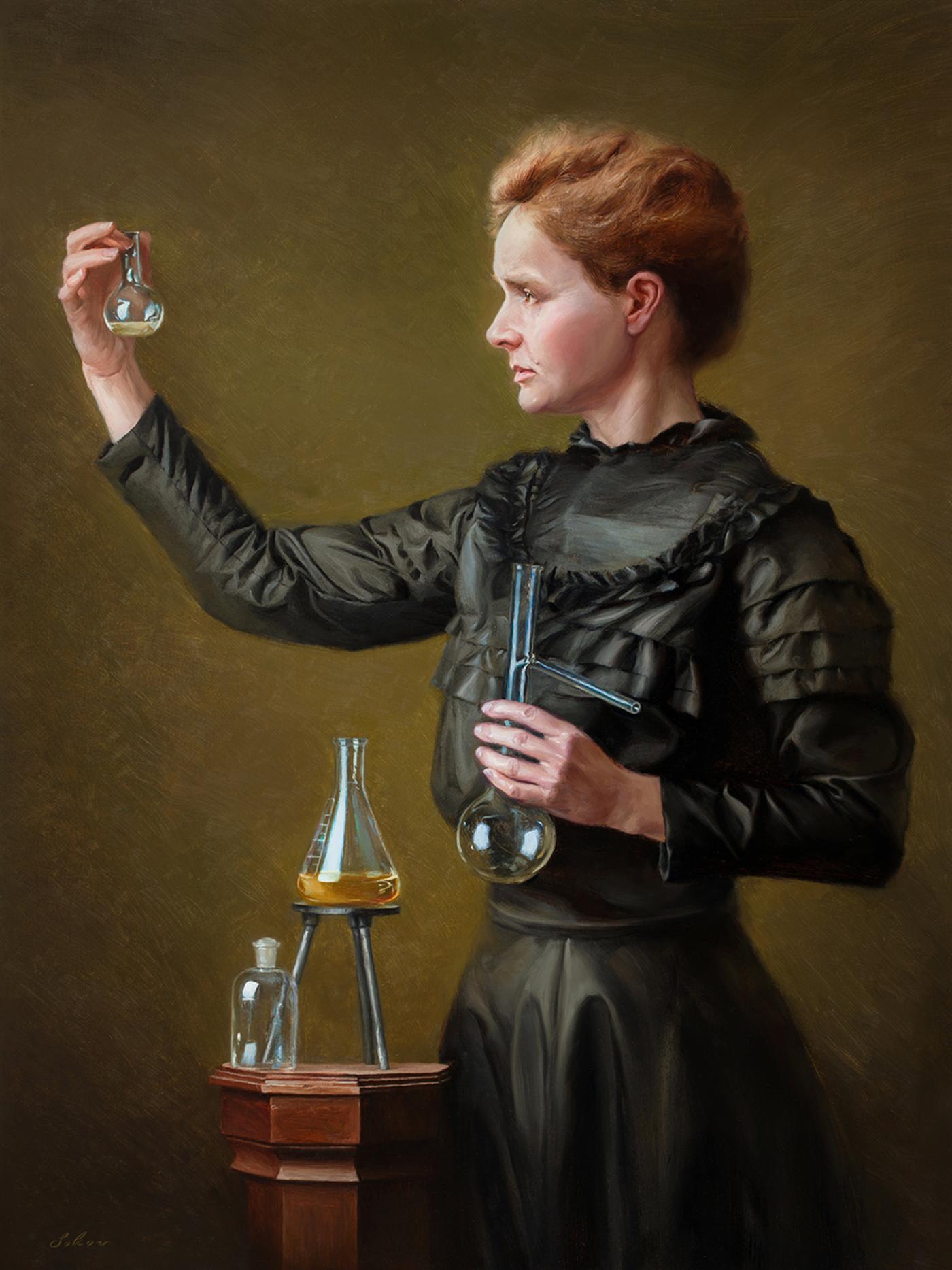
Title: Marie Curie (2020)
Artist: Pavel Sokov (1990)
Marie Curie (1867 - 1934) made discoveries in the field of radioactivity around the 20th century. Her discoveries laid the foundation for advances in nuclear physics, chemistry, and medicine. “For example, the development of radiotherapy is based on her work, which changed the treatment of cancer. Her research into radioactivity also laid the foundation for the development of X-ray machines.” Marie Curie’s most famous discovery was that of the elements polonium and radium. During the First World War, she operated X-ray units and assisted military doctors. In recognition of this, Marie Curie became the first woman to win a Nobel Prize and is still the only person to have won Nobel Prizes in two different scientific fields: physics (1903) and chemistry (1911). “Her achievements were an example for women who also aspired to a career in science.”
Sokov’s painting is relatively young and also the newest example from Pasterkamp’s book. “I chose this painting as a cover because I really like it. Moreover, I got in touch with the artist during my work on the book.” In Sokov’s painting, Marie Curie examines materials in glass bottles.
Samuel Finley Morse, inventor of the telegraph and painter
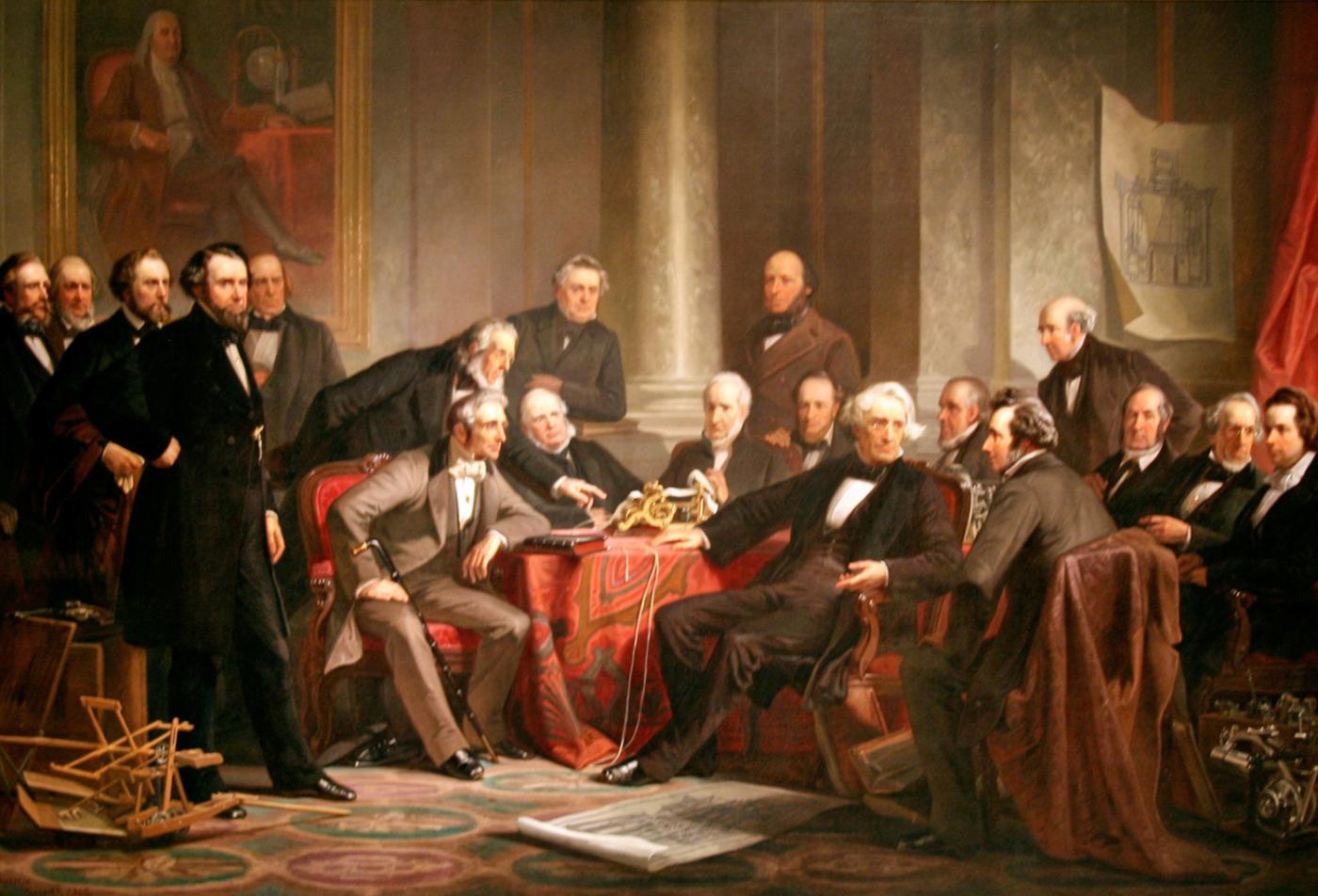
Title: Men of Progress (1857)
Artist: Christian Schussele (1824-1879)
In 1844, Samuel Finley Morse (1791-1872) succeeded in transmitting a coded message with text characters over a 64-kilometre-long telegraph line. This system, also known as the Morse code, makes it possible to translate movement into letters and numbers. Later, the Morse code became the most important language of telegraphy worldwide.
Samuel Morse is known as an American inventor, but he was also a painter. At the time, he temporarily put aside his work on a well-known painting, The Louvre’s Gallery, in order to devote more time to inventing the telegraph. In Schussel’s painting, Morse is painted sitting at the table, looking at the man next to him. “The portrait would have been made to honour national achievements, especially in the field of technological and industrial developments.”
Edward Jenner, inventor of the smallpox vaccine
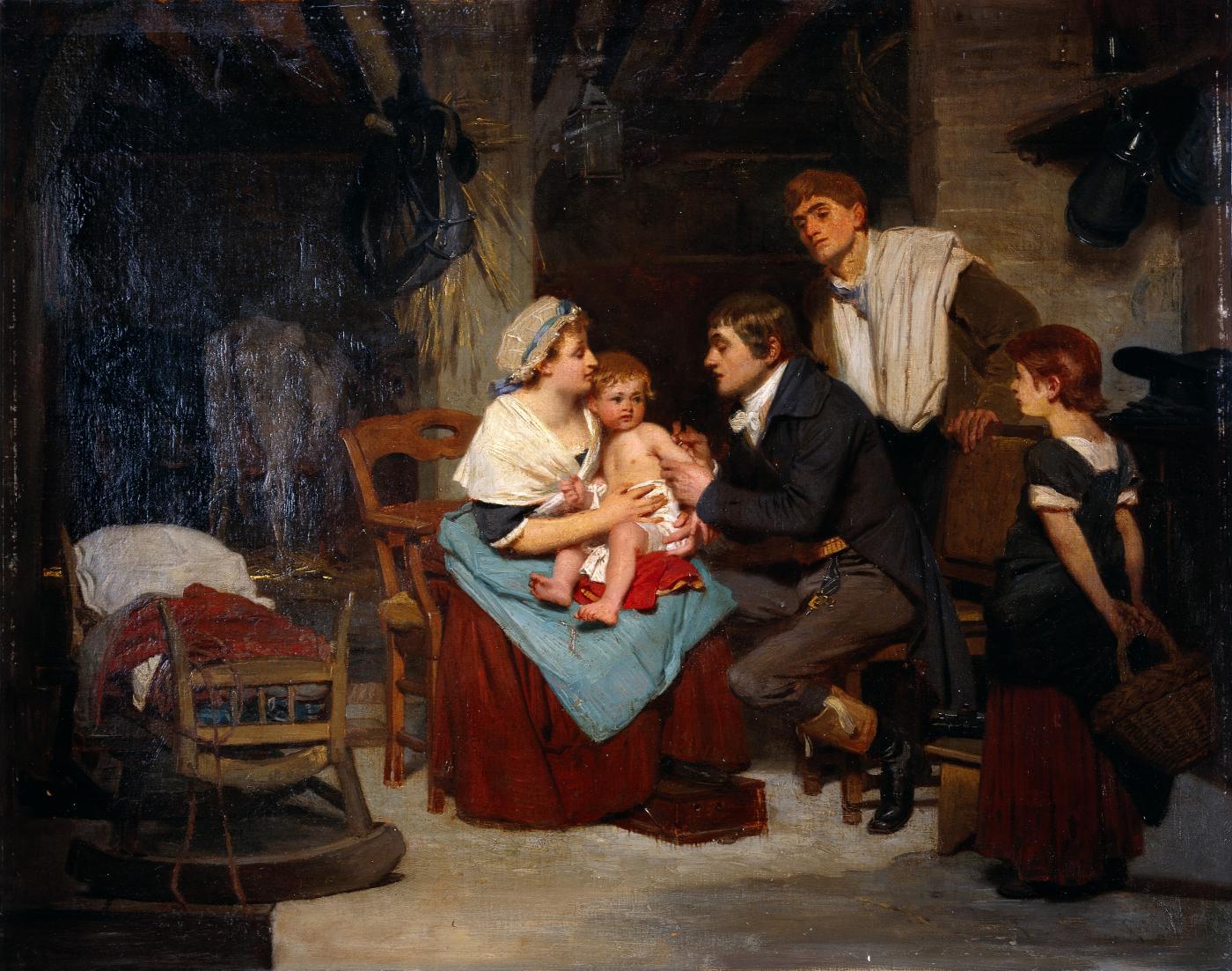
Title: Edward Jenner vaccinating a boy (1884)
Artist: Eugène Ernst Hillemacher (1818-1887)
Edward Jenner (1749-1823) is considered the inventor of vaccination as we know it today. His discoveries and contributions led to the development of the smallpox vaccine. Jenner took some material from a cowpox ulcer that the milkmaid Sarah Nelmes had on her hand and inoculated the eight-year-old boy James Phillips with it. After the boy recovered, Jenner deliberately exposed him to smallpox. The boy didn’t get sick.
Hillmacher’s painting shows Edward Jenner taking fluid from a cowpox blister from the milkmaid’s hand and inoculating a boy with it. In the painting, the boy appears to be younger than eight.
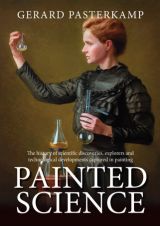
DUB is giving away two Dutch and two English copies of Painted Science! Find out how you can enter the competition here.
For anyone who wants to be assured of a copy: Painted Science is available as a hardcover and as a paperback (in English and Dutch) through amazon.nl, bol.com and bookstores. For more information, visit the Painted Science website.